

Display No. 11A
DE WINTON, Thomas H
At the outbreak of the Second World War, Thomas de Winton was an undergraduate at Cambridge University. de Winton immediately volunteered to serve in the Royal Navy, eventually serving in the battleship HMS Resolution as a high angle gunnery officer. He later specialised as a Navigation Officer and was a Lieutenant when demobilised in 1946.
De Winton subsequently decided to join the Royal Naval Volunteer Reserve (RNVR) and became a teacher at Durham School commanding its cadet corps. In 1951 he was made a Member of the Most Excellent Order of the British Empire (MBE) for his services. He was also awarded the Volunteer Reserve Decoration (VRD). He immigrated to New Zealand upon his retirement.
Awarded medal(s)
Medal Description [Left to Right]:
Member of the Most Excellent Order of the British Empire (MBE)

Established by King George V in 1917 for services to the British Empire. The Order has five classes: Knight and Dame Grand Cross (GBE), Knight Commander and Dame Commander (KBE / DBE), Commander (CBE), Officer (OBE) and Member (MBE). The MBE badge is in frosted silver. In December 1918, the Order was split into two divisions: a Civil Division for civilian recipients; and a Military Division for awards to commissioned officers and warrant officers for distinguished service in action. The insignia of the Civil and Military Divisions is distinguished only by the ribbon, the military award having a narrow central stripe. Prior to the introduction of the New Zealand Order of Merit in 1996, the Order of the British Empire was the most common honour awarded to New Zealand military personnel.
The 1939-1945 Star
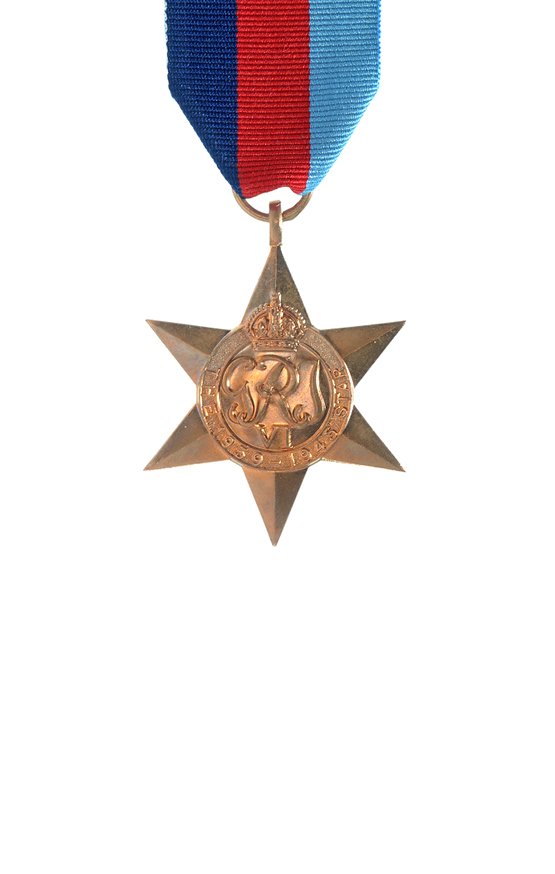
The 1939-45 Star is the first in a series of eight campaign stars instituted in 1945 to recognise service in World War Two. The ribbon has three equal vertical stripes of dark blue, red and light blue. The dark blue stripe symbolises the service of the Navy and the Merchant Navy, the red stripe symbolises the service of the Army, and the light blue stripe symbolises the service of the Air Force. The equal width bands represent the equal contributions of the three service arms towards victory. The ribbon was devised by King George VI. Two clasps could be awarded with this medal: ‘Battle of Britain’ and ‘Bomber Command’. Only aircrew would qualify for these clasps although a small number of Fleet Air Arm naval pilots flew for the air force and would be eligible for the ‘Battle of Britain’ clasp.
The Atlantic Star
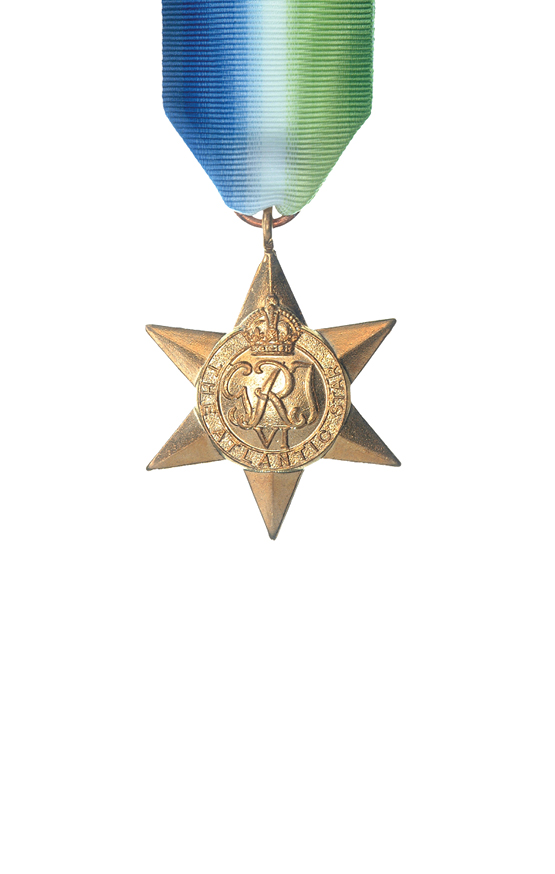
The Atlantic Star was awarded for service during the Second World War. It was instituted to commemorate the Battle of the Atlantic the longest continuous military campaign in the Second World War running from 3 September, 1939 – 8 May, 1945. Six months naval service or four months air service in the Atlantic, United Kingdom (‘home’) waters or North Russian waters was normally required. The ribbon is watered silk coloured blue, white and green, symbolising service in the oceans. Two clasps could be awarded with this medal: ‘France and Germany’ and ‘Air Crew Europe’. Personnel issued the Atlantic Star who then qualified for either the France and Germany and the Air Crew Europe Stars were awarded a clasp in respect of the second only (as only one clasp could be worn on the star).
The Africa Star
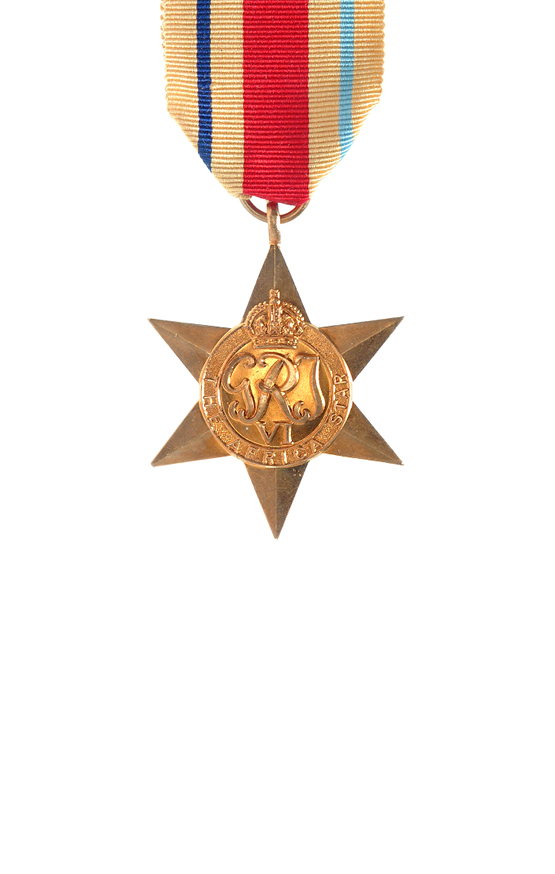
The Africa Star was awarded in the Second World War for service in North Africa between 10 June 1940 and 12 May 1943. The ribbon is pale buff in colour, with a central vertical red stripe, and narrower stripes, one dark blue and the other light blue. The pale buff background symbolises the desert, the central red stripe symbolises the Army, the dark blue stripe symbolises the Navy and Merchant Navy, and the light blue stripe symbolises the Air Force. Three clasps could be awarded with this medal: ‘North Africa 1942-43’, ‘8th Army’, and ‘1st Army’. Naval personnel could only qualify for the ‘North Africa 1942-43’ clasp – for in shore service.
The Italy Star
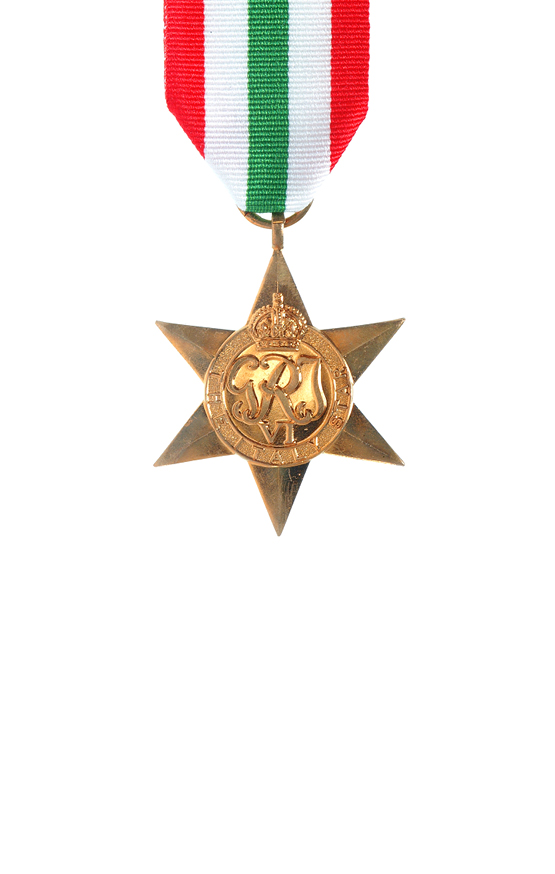
The Italy Star was awarded for operational service in Italy and adjacent countries in the Second World War between 11 June 1943 and 8 May 1945. No clasps were awarded. The ribbon uses the national colours of Italy; red, white and green as seen on the flag.
Royal Naval Volunteer Reserve Decoration
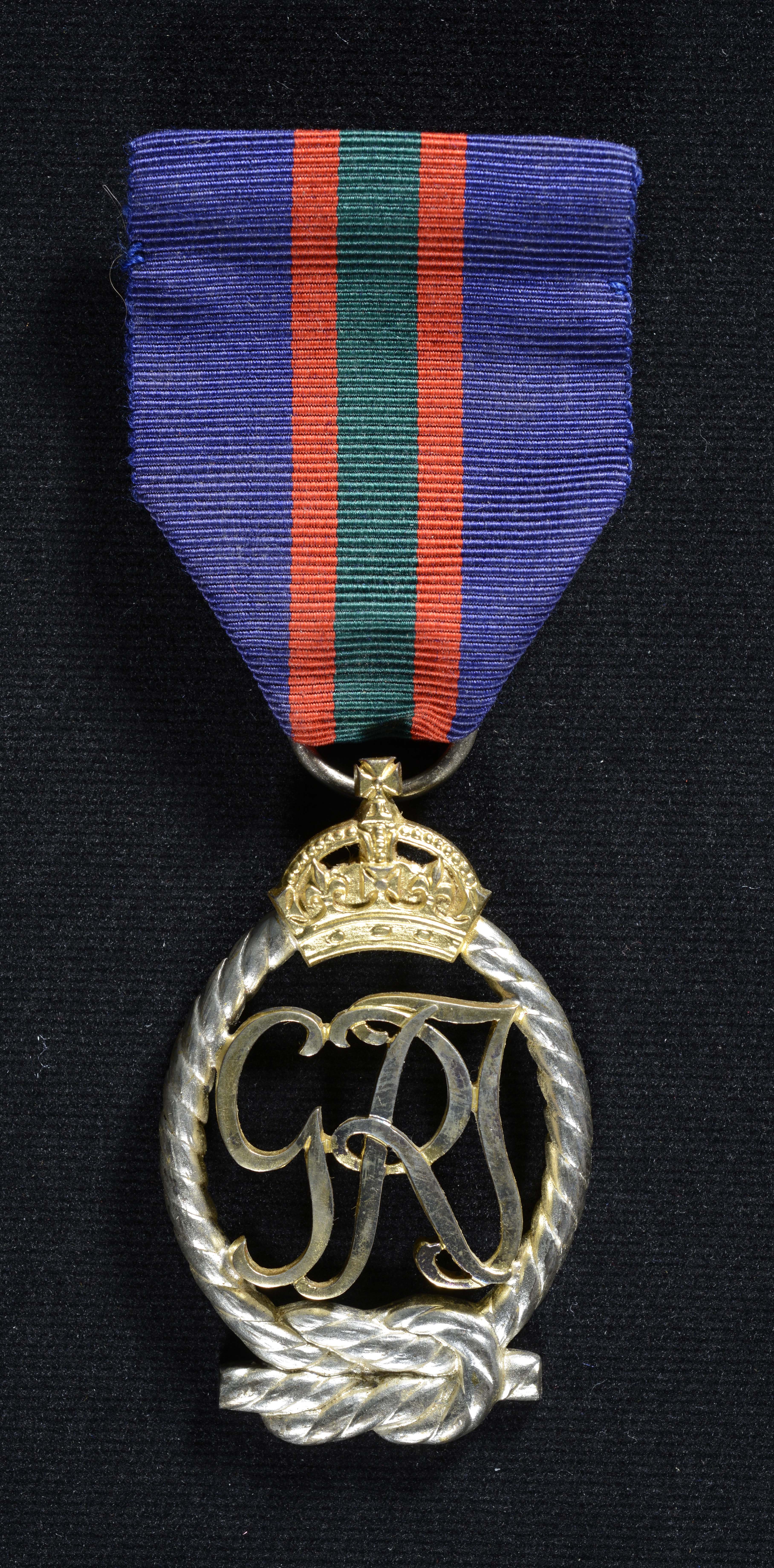
Instituted in 1908, the Royal Naval Volunteer Reserve Decoration was awarded to commissioned officers in the Royal Naval Volunteer Reserve after fifteen years of service; wartime service counting as double. Holders were entitled to the postnominal letters VD (until 1947) or VRD (after 1947). The original plain dark green ribbon was replaced with a blue, green and red striped version in 1919. The VRD was discontinued in the United Kingdom in 1966 but continued to be awarded in New Zealand, being instituted in 1985 as the Royal New Zealand Naval Volunteer Reserve Decoration with qualifying service backdated to 1977. The New Zealand VRD is the exact same design as the RNVR Decoration with the post 1919 striped ribbon. The ribbon colours are symbolic with blue representing the sea, red the Royal crimson and green which was the colour of the ribbon of the original Volunteer Officer’s decoration.
The War Medal 1939-1945
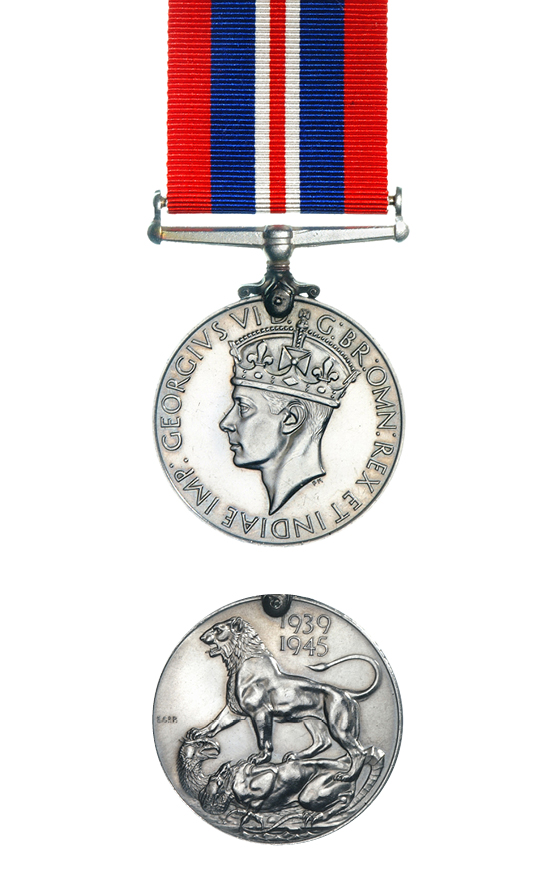
The War Medal 1939-45 was awarded across the British Commonwealth to all full-time members of the Armed Forces in the Second World War for 28 days service between 3 September 1939 and 2 September 1945, irrespective of where they were serving. The ribbon is the red, white, and blue of the (British) Union Flag. There is a narrow central red stripe with a narrow white stripe on either side. There are broad red stripes at either edge, the two intervening stripes being blue.
A bronze oak leaf on the medal ribbon denotes that the recipient was Mentioned in Despatches. To be Mentioned in Despatches a member of the armed forces had their name mentioned in an official report, written by a superior officer, and sent to a higher command. The report would describe the individual’s gallant or meritorious action in the face of the enemy.

